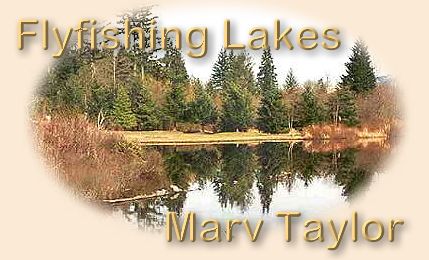|
The first three or four weeks of the season
(Henry's Lake opens on Memorial Day weekend)
is trolling time. The lake is often crowded with
"party" boats and multiple (illegal) limits are
common. The best trolling areas seem to the green
roof hole, near the mouth of Targhee Creek,
and at the center lake glory hole. The most popular
lures include pop gear, Flatfish, Panther Martins,
and Rapalas.
While flies will certainly take fish in June, the
cooler waters of early season scatter the fish and
larger pods may be more difficult to locate. With
only moderate snow packs this past winter, and
predictions of a warm summer, the more traditional
hot spots, like Staley Springs, A Frame Flat, Duck
Creek, Hope Creek and Pintail Point will be good
areas for June fly fishermen.
By the Fourth of July, weed beds have begun to take
over the lake and the balance of the season pretty
much belongs to the fly fishermen and bait anglers.
The best fly patterns suggest chironomids, caddis
pupas, scuds, damsel nymphs and leeches. The recent
drought years seem to have cut back on the damsel
hatch that used to be heroic in size. I can remember
seasons in the '70s when the hatches were so heavy
we wondered why the trout would even consider our
imitations when each square yard was filled with
dozens of naturals. We now find caddis and midges
filling in the niche in the food chain left by the
disappearing damsels.
The best spots to fish with flies in July and August
are Staley Springs, A-Frame Flat, Duck Creek, Hope
Creek, Hybrid Hole #2, the Green Roof Hole, Targhee
Creek, and the area near the Stump Hole on the north
shore.
The months of September and October usually offer
fly fishermen the best fishing of the season. In
October the locals experience what they refer to
as the "casting and blasting" season. The duck and
goose hunting on the Big H can be just as good as
the fishing.
The fish of choice in September and October is usually
the brook trout. When there are enough brookies to make
decent spawning runs up the several creeks that offer
spawning habitat, anglers lie in wait and hang some
really large brook trout as they gather near the
mouths of the these creeks. My favorite brook
trout spawning run is the one that gathers at
the mouth of Duck Creek in September.
In July, 1989, I borrowed a boat from the late Bill
Akers, and fished all around the lake. The second day,
I hooked a brook trout at the mouth of Duck Creek that
I clearly saw twice (before losing it to the weeds).
I got a good grasp of its length and using the accepted
formula decided it might have been the 9-pounder Fish
and Game had weighed at the hatchery the previous
winter. While I did fish other areas on the lake
during my two week vacation, I visited my Duck
Creek hole twice each day; just in case that
magnificent brook trout was hungry. I never saw
it again. If I had, there would have been a photo
of it with this column.
TACKLE RECOMMENDATIONS FOR THE LAKE
My rod of choice for the Big H is a 9-foot, medium-fast
graphite, built to cast 6-weight lines (I do over-load
the rod one line size). On especially windy days, I go
to an 8-weight rod.
The heavier rod is a must, if you are to be able to turn
large trout out of the weeds. A good single action reel
with 100 yards of backing is adequate. The reel should
have a good drag, and should have rim control. As weedy
as the Big H is, the angler must often turn big fish
as they near especially heavy beds.
The angler should have the following full sinking fly
lines, all in weight-forward: An Intermediate, Types
I, III and IV. While the line most used will be the
Type III, there are times in shallower water when the
Intermediate and Type I will catch more fish. I use
the Type IV when the wind is blowing and I'm fishing
from a boat. The angler on a budget can get by with
a Type I and a Type III.
Since the angler will be fishing sinking lines, long
leaders are not necessary. I fish mostly 4- to 6-foot
leaders, with a 3X tippets. If the fish are really
fussy, I've been known to drop clear down to 5X.
Since there is no way to fish from shore, the angler
needs a boat, float tube, or pontoon boat to cover the
lake. While I've written two books promoting float
ube fishing, Henry's Lake is a body of water I would
prefer to fish from a boat. Some days it takes a lot
of running around to find the fish. Some type of
fish-finder is almost a must on Henry's. The fish
have a tendency to move about.
In 1995 we had three weeks of spectacular action at
the mouth of Targhee Creek. On some days there would
be 40 or more boats anchored in the area (there is
no float tube access. Tubers must hitch a ride if
they want to fish the Targhee Creek hole.) Almost
overnight this huge pod of fish moved to the Cliffs;
where we had a week of good fishing. Then the fish
moved to the mouth of Duck Creek.
My specific pattern recommendations include: Canadian
Brown Leech, Canadian Red Leech, Canadian Brown Emerger,
Taylor Shrimp (shown below), Marv's Fly, Henry's Lake
Renegade, Halloween Leech, Black and Tan Leech and the
Henry's Lake Leech. These patterns are all listed in
my books, Float-Tubing The West, and
Fragments Of The Puzzle, Vol. II. Fragments Of The
Puzzle, Vol.I also has maps of where to fish
the big lake.
If the angler can find a copy of Fishing Henry's Lake
, by Bill Scheiss, he should follow Bill's
recommendations.
MARV'S FLY OF THE WEEK

TAYLOR SHRIMP
Hook: Regular shank (at rest) 8 - 14, weighted with
.020 fuse wire; Standard 1X long (swimming) 8 - 14, also weighted.
Thread: Light olive, prewaxed 6/0.
Tail: Light-olive saddle hackle, tied on by the
butt, half way down the bend.
Body: Dark-olive and gold (Dark-olive and yellow
will work) variegated chenille, size small (Danvilles 0
size) tied halfway down the bend, and wrapped forward.
Legs: Light-olive saddle hackle, tied on at the
bend and wrapped forward over the chenille, and trimmed
on the top and on the sides.
HEAD: Light olive.
Most of my favorite trout lakes and reservoirs have
one thing in common: they possess some type of
staceans. Some trophy fisheries like the legendary
Henry's Lake, and Montana's Clark Canyon Reservoir,
have enormous scud populations. Others, like eastern
Oregon's Malheur Reservoir, have harbored enough
crayfish to support a commercial fishery in the past.
Author Dave Whitlock believes that crustaceans are one
of the three most important groups of aquatic trout foods.
"Most high-quality trout waters I know of," Dave writes
in Guide To Aquatic Trout Foods, "would not
successfully support the fish populations without
populations of scuds, sowbugs, or crayfish."
The body configuration of different scud species remain
pretty much the same. They resemble insects in their
jointed appendages, with broadly jointed heads and
no neck structure. They differ greatly in size and
color. From the tiny size 18 and 20 creamish-gray
scuds of Henry's Lake, to the larger medium-olive
scuds of Clark Canyon Reservoir, the fly fisher is
challenged to possess a wide range of sizes and
colors in his fly boxes. (I've been told the trout
lakes in western Manitoba have scuds as large as
1 1/4-inches). I carry different scud patterns
in sizes ranging from 8 to 20.
The dressing listed above is for the medium-olive
coloration of the Clark Canyon Reservoir scud. That
color phase is one of the most common. At one time
in my career (about 10 years ago), I tabulated records
over a five year time-frame, and found this pattern
accounted for about 45-percent of my fish. It is one
of my DEADLY DOZEN.
I tie this pattern in an "at rest" posture (see photo),
and in a swimming posture. When the scud is 'at rest'
he is sort of curled up. When he swims, he elongates
his body. I fish the 'at rest' version more, because
fish at times will also take that version for a snail.
~ Marv
About Marv
Marv Taylor's books, Float-Tubing The West,
The Successful Angler's Journal,
More Fragments of the Puzzle, (Volume I) and More
Fragments of the Puzzle, (Volume II) are all available from
Marv. You can reach Marv by email at
marvtroutman@juno.com or by phone: 208-322-5760.
|



